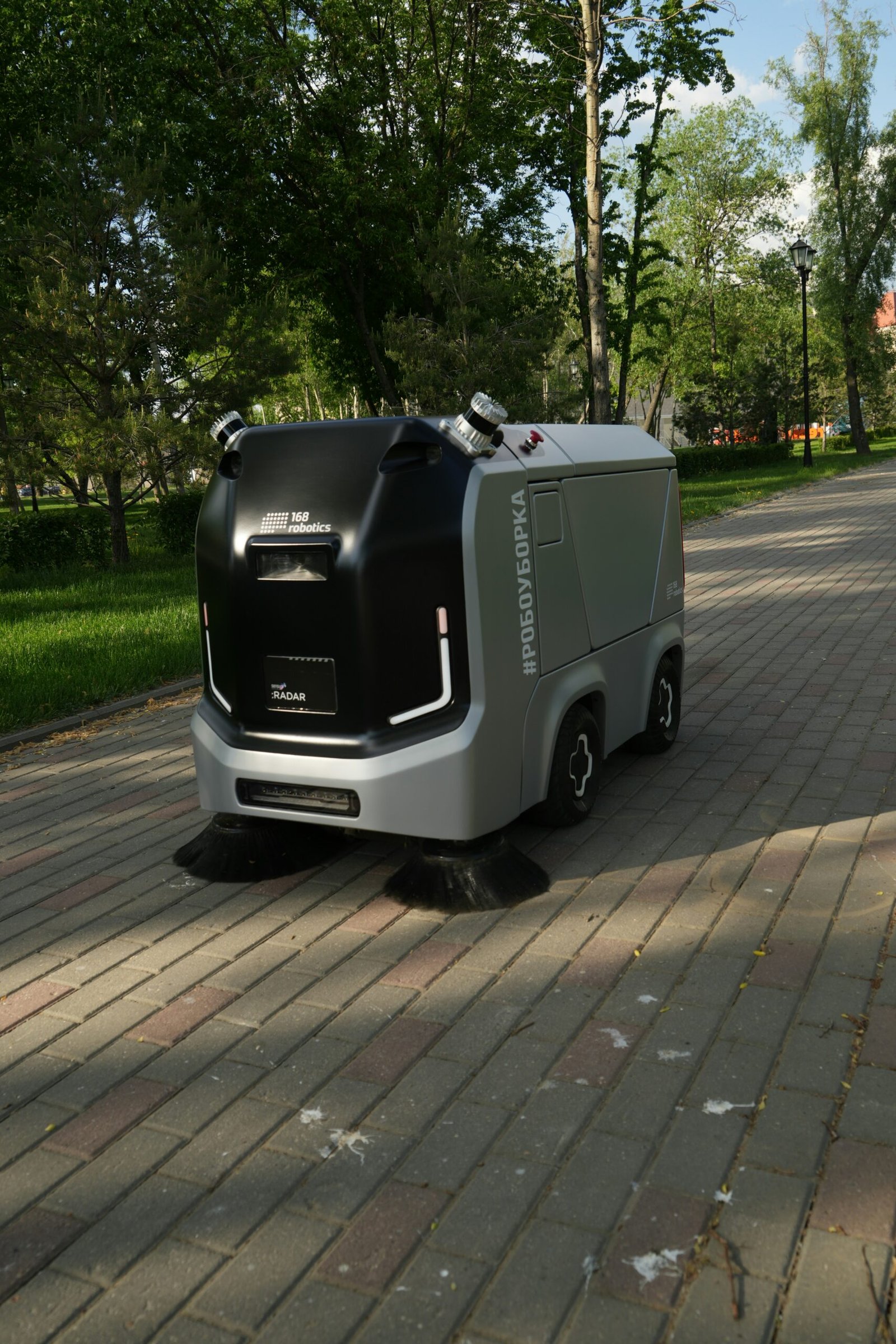Introduction to Multimodal AI
Multimodal AI represents a significant advancement in artificial intelligence technologies, characterized by its ability to process and integrate multiple forms of data simultaneously. Unlike traditional AI systems that specialize in a single mode of data—such as text or images—multimodal AI can analyze and synthesize information from diverse sources, including audio, video, text, and images. This capability allows for a more comprehensive understanding of complex information and enables the generation of richer, more context-aware outputs.
The relevance of multimodal AI in the current technological landscape cannot be overstated. As businesses and organizations adopt more sophisticated AI tools, the demand for systems that can effectively analyze and interpret a variety of data types is increasing. By leveraging multimodal capabilities, companies can enhance user interactions, improve accessibility, and create more effective solutions across industries such as healthcare, finance, and entertainment. For instance, integrating visual data with textual information can significantly improve decision-making processes and enhance customer experiences.
One of the key challenges in developing multimodal AI lies in the requirement for complex algorithms that can function seamlessly across various data types. Researchers are focused on improving the synergy between different modalities, ensuring that the AI system takes full advantage of all available data to enhance its learning and prediction capabilities. The advancements in deep learning and neural networks are revolutionizing how these systems are designed, allowing them to not only process input data more effectively but also to generate creative outputs that often mirror human-like understanding.
In summary, multimodal AI is poised to play a central role in the evolution of artificial intelligence, with its ability to enrich outcomes through the integrated analysis of diverse data types. As we move toward 2025 and beyond, the significance of this technology will likely continue to grow, influencing the design and implementation of future AI solutions.
Current State of AI Technologies
As of 2023, the landscape of artificial intelligence (AI) technologies has evolved significantly, yet the majority of existing systems primarily focus on single-modal inputs. These conventional models, which rely on one type of data—such as text, images, or audio—demonstrate substantial capabilities but are inherently limited in their applicability and efficiency. For instance, natural language processing (NLP) models excel in understanding and generating human language but falter when tasked with visual recognition or audio processing, and vice versa. This singular focus restricts their practical usage, often requiring integration with other systems to achieve desired outcomes.
Current AI technologies exhibit remarkable advancements in their respective domains. Image recognition systems, powered by convolutional neural networks (CNNs), have transformed fields such as healthcare, automotive, and security by providing high accuracy in detecting and classifying objects. Similarly, advancements in NLP, bolstered by transformer-based architectures, have paved the way for more human-like interactions in customer service and content generation. However, despite their prowess within their individual modalities, these models cannot synergistically combine the strengths of different data types, which is essential for more comprehensive solutions.
Moreover, the reliance on single-modal inputs leads to several drawbacks, including increased complexity in operational processes, difficulties in sustaining context across different formats, and high development costs for integrating separate models. These limitations highlight the potential for significant enhancements through the advent of multimodal AI, which promises to unify various data types into cohesive, intuitive systems capable of more sophisticated understanding and functionality. The evolution of these technologies sets the stage for innovative applications and integrations that leverage the full scope of artificial intelligence, fostering a new era of intelligent solutions.
Key Advancements in Multimodal AI
Multimodal artificial intelligence (AI) is experiencing rapid development, with various key advancements reshaping the landscape of this technology. At the core of these innovations are sophisticated algorithms and frameworks specifically designed to process and interpret multiple types of input simultaneously, including text, images, audio, and video. The evolution of neural networks is particularly noteworthy, as recent models have demonstrated an unprecedented ability to learn and correlate information across different modalities, leading to richer and more nuanced outputs.
One of the primary advancements in multimodal AI is the development of transformers that integrate various modalities into a unified framework. These models, such as Vision-Language Transformers, leverage large-scale datasets to enhance their understanding of diverse contexts. By learning from vast amounts of multimodal data, these systems can generate comprehensive insights, create intricate connections between different inputs, and carry out complex tasks such as image captioning or visual question answering. This capability significantly extends the utility of AI applications in creative fields, healthcare, and education.
Furthermore, a focus on improved training techniques has been pivotal. Researchers are exploring transfer learning methods that allow models trained on one modality to apply their insights to another. This helps overcome data scarcity issues in certain domains while accelerating the training processes. For instance, a model trained predominantly on text data can effectively learn from visual inputs without extensive retraining. Moreover, advancements in unsupervised and self-supervised learning approaches are enabling models to discover patterns and relationships within multimodal datasets without the need for excessive labeled examples.
As algorithms continue to evolve and computational power increases, we can anticipate that multimodal AI will expand its realm of influence significantly. The exploration of diverse data types will not only push the boundaries of what AI can achieve but will also lead to more human-like interactions and understanding from machines—an essential step toward truly intelligent systems.
Impact on Search Engines and User Experience
The integration of multimodal AI into search engines is poised to significantly enhance user experience by providing more accurate and relevant results. With the ability to process and interpret various data types, including text, images, and audio, these advanced technologies can deliver a more comprehensive understanding of user queries. Traditional search engines mainly rely on keyword matching and text-based algorithms; however, multimodal AI goes beyond this limitation, allowing for a more nuanced interpretation of search intent.
For instance, a user searching for “best travel destinations” might benefit from a seamless blend of text articles, image galleries, and audio clips from travel podcasts. The multimodal approach allows search engines to present a rich tapestry of related content, improving the likelihood of user satisfaction. Such a paradigm shift in information retrieval not only enhances the quality of search results but also engages users in a multifaceted manner, catering to diverse preferences and learning styles.
Moreover, the implementation of multimodal AI can lead to reduced ambiguity in user queries. By interpreting context from different data types, search engines can refine their understanding and generate results that resonate better with users’ expectations. For example, if a user uploads a photo of a dish and asks for its recipe, the search engine can analyze the visual components alongside textual databases to provide an accurate and relevant response. This convergence of multimedia processing capabilities renders a more holistic search experience, fostering deeper interaction with content.
As we look forward to 2025, the evolution of search engines through multimodal AI is crucial in shaping how users access and interact with information online. By making search results more relevant and engaging, these technologies will create a more satisfactory user experience, encouraging a new standard for digital information retrieval.
Multimodal AI in Content Creation
As we look ahead to 2025, the integration of multimodal AI within content creation is poised to revolutionize the way creators produce and present engaging material across various platforms. Multimodal AI refers to systems capable of processing and generating content in multiple formats simultaneously, including text, images, audio, and video. This capability significantly enhances creativity and engagement by allowing creators to construct rich narratives that resonate with diverse audiences.
The ability to seamlessly integrate different content forms enables creators to tell stories in more immersive ways. For example, a video tutorial can be enhanced with on-screen text and interactive elements, while background music complements the visual aspects, ensuring that the audience remains captivated. This synthesis of modalities not only fosters deeper understanding but also caters to the varied preferences of users, which is particularly crucial in an increasingly digital consumer landscape.
Moreover, multimodal AI tools are facilitating automation in content creation, allowing for rapid production without sacrificing quality. Content creators can utilize AI to generate written copy, design graphics, and even compose music, all of which can be tailored to fit specific themes or branding objectives. This streamlining of the process not only improves efficiency but also allows for a more consistent output, ultimately enhancing the creator’s ability to maintain audience engagement over time.
Furthermore, the rise of social media and emerging multimedia platforms has prompted a surge in demand for versatile content that captivates audiences in unique ways. With multimodal AI, creators can adapt their content dynamically, ensuring that they remain relevant and appealing to their target demographics. As AI technology continues to advance, the potential for innovative content creation will only broaden, marking an exciting new chapter for digital creators and consumers alike.
Transforming Customer Support with Multimodal AI
As businesses continuously seek innovative ways to enhance customer interactions, the integration of multimodal artificial intelligence (AI) in customer support emerges as a groundbreaking solution. Multimodal AI encompasses various forms of communication, such as text, voice, video, and images, enabling companies to tailor their assistance based on individual customer preferences and needs. This transformative technology allows chatbots and virtual agents to not only engage in textual conversations but also interpret visual stimuli and respond using diverse media formats.
One significant advantage of multimodal AI in customer support is its capacity for personalization. By utilizing data collected from multiple sources, these advanced systems can create a comprehensive profile of each customer. This knowledge allows them to deliver tailored recommendations, solutions, and guidance throughout the customer interaction. As a result, customers experience more meaningful engagements, leading to increased satisfaction and loyalty.
Furthermore, multimodal AI systems can effectively handle complex inquiries that require contextual understanding. For instance, a customer seeking assistance with a technical issue may benefit from a visual walkthrough presented by a virtual agent. By seamlessly integrating graphics or instructional videos, businesses can enhance comprehension and improve the resolution process. This not only reduces frustration for customers but also streamlines operations for support teams, allowing them to focus on more intricate tasks.
Moreover, the implementation of multimodal AI can leverage machine learning algorithms to refine interactions based on customer feedback and behavior patterns. The continuous learning aspect of these technologies ensures that virtual agents evolve in their ability to assist customers over time, fostering a more efficient and effective support experience. As we look ahead to 2025, it is clear that the role of multimodal AI in customer support will be pivotal, redefining industry standards and enhancing customer engagement through innovative solutions.
Challenges and Ethical Considerations
The rapid advancement of multimodal AI technologies presents numerous challenges and ethical considerations that must be thoroughly examined as we move towards 2025. One of the most significant issues is bias in AI systems. Multimodal AI relies on vast datasets, which may inadvertently contain data that reflects societal inequalities. If these biases are not identified and addressed, they can perpetuate and even exacerbate existing prejudices in various domains, including hiring, law enforcement, and social services. Addressing bias requires ongoing evaluation and iterative improvement of the algorithms and data sources used to train these systems.
Another critical challenge is data privacy. Multimodal AI often processes diverse types of data, including visual, auditory, and textual information, raising concerns about the extent of data collection and its implications on personal privacy. In a future where data is increasingly intertwined, it is paramount that developers implement robust security measures and privacy protocols to protect user information. Regulations such as GDPR in Europe establish essential guidelines, but there is a continued need for global standards that safeguard user rights while enabling innovation within the AI landscape.
Transparency in AI systems also plays a vital role in user trust. As multimodal technologies become more integrated into daily life, the complexity of these systems may obscure their decision-making processes. Ensuring that AI operates transparently will involve making the inner workings understandable to users and stakeholders, thus demystifying how decisions are made. Additionally, fostering user trust requires open communication regarding the limitations and potential risks associated with AI systems. Engaging with diverse stakeholders—including ethicists, technologists, and the end-users—can help create more accountable and responsible AI frameworks.
Future Prospects of Multimodal AI
As we look towards 2025, the evolution of multimodal artificial intelligence (AI) technologies is expected to accelerate, fundamentally transforming a variety of sectors. Multimodal AI, which integrates and processes information from multiple modalities such as text, audio, and visual data, holds immense potential. Its applications are broad-reaching, spanning health care, education, entertainment, and beyond, promising a future where human-AI interaction becomes increasingly seamless and intuitive.
In the health care sector, for instance, multimodal AI could lead to more accurate diagnostics. By analyzing medical imaging alongside patient history and real-time data from wearable devices, AI systems might assist clinicians in identifying complex conditions that are often overlooked when relying on a single mode of information. This capability can lead to better patient outcomes and more personalized treatment plans, enhancing the quality of care delivered in hospitals and clinics.
Education is another domain that stands to be revolutionized by multimodal AI. With the ability to personalize learning experiences, these technologies can cater to individual student needs more effectively. By integrating video lessons, interactive quizzes, and real-time feedback, educators might create adaptive learning environments that enhance engagement and understanding. The predictive capabilities of such systems can also identify at-risk students early, allowing for timely interventions and support.
Furthermore, the entertainment industry is likely to embrace multimodal AI to enrich user experiences. By blending audio, visuals, and interactive elements, content creators could design immersive environments for gaming and virtual reality, reshaping how stories are told and experienced. This shift could generate innovative content genres and redefine consumer engagement.
As these technologies advance, they will not only impact businesses and services but also reshape consumers’ interactions with the digital world, making it more accessible and intuitive. The implications of multimodal AI for various sectors by 2025 promise to be profound, setting the stage for a new era of technology-driven possibilities.
Conclusion
As we look towards 2025, the prominence of multimodal AI technologies is expected to significantly reshape various aspects of digital interaction. Throughout this blog post, we have examined the multifaceted developments occurring in this exciting field, including their implications across sectors such as healthcare, education, and entertainment. These innovations combine the strengths of multiple data formats—text, audio, and visual content—enabling machines to interpret human inputs with greater accuracy and depth.
By leveraging advancements in deep learning, natural language processing, and computer vision, multimodal AI systems are becoming increasingly sophisticated. They are capable of understanding context and intention far beyond what traditional technologies have offered. This shift not only enhances user experience by allowing for seamless interaction but also opens up new avenues for personalizing services across industries. As organizations continue to invest in these multimodal capabilities, we can expect a future where AI systems are increasingly integrated into our daily lives, evoking natural and intuitive engagement.
Moreover, the importance of staying informed about these developments cannot be overstated. As multimodal AI technologies evolve, they are poised to create comprehensive solutions that address complex challenges. This evolution will not only alter the way individuals interact with machines but will also impact broader societal constructs. Therefore, it is crucial for stakeholders—from business leaders to everyday users—to remain vigilant and engaged with the latest advancements in this rapidly changing landscape.
In summary, the integration of multimodal AI technologies represents a transformative journey that is set to redefine our interactions by 2025 and beyond. By paying attention to these trends, readers will be better equipped to navigate the future and harness the benefits these innovations will bring.






